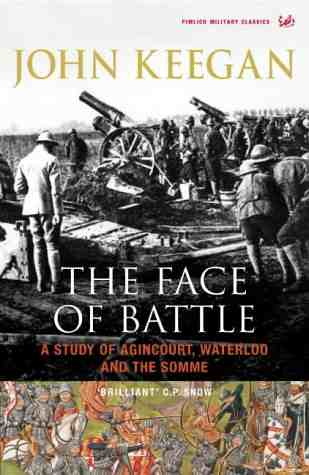One of the toughest challenges involved in writing about medieval warfare is that of describing what battle in that period was like: how it might have felt to be there, including not just the physical sensations but also the psychological and emotional. What would have been running through the combatants’ minds? What motivated and inspired men like my protagonist, Tancred, to take up arms in the first place, and what gave them the confidence to risk their lives in the fray? Was it for money or fame that they principally fought, in the name of God or one’s king, or (more probably) was it a combination of all of these things?
 The historian John Keegan, who sadly passed away last year, explores similar themes in his pioneering book The Face of Battle, in which he analyses and compares the experience of combat in three major encounters of the last 600 years: Agincourt (1415), Waterloo (1815) and the Somme (1916). In particular he examines how the mechanics and logistics of conflict affected the psychology of the individual soldier – looking not just at the critical moments during the heat of combat, but also at the hours before battle was joined, and its aftermath once the dust has settled.
The historian John Keegan, who sadly passed away last year, explores similar themes in his pioneering book The Face of Battle, in which he analyses and compares the experience of combat in three major encounters of the last 600 years: Agincourt (1415), Waterloo (1815) and the Somme (1916). In particular he examines how the mechanics and logistics of conflict affected the psychology of the individual soldier – looking not just at the critical moments during the heat of combat, but also at the hours before battle was joined, and its aftermath once the dust has settled.
Keegan eschews analyses of strategy and tactics that many conventional military histories often involve, which – he argues – can sometimes misrepresent the ebb and flow of battle; instead he recognises the chaos and unpredictability inherent in war. The focus of his study is statedly not upon the respective generals and their abilities to lead and choose the correct course of action, but upon the lower ranks: a bottom-up rather than a top-down angle.
An advantage, too, of taking such a long view of the experience of battle is that he is able to highlight those aspects that have remained constant even over hundreds of years, in widely different fighting environments; and those which have altered as a result either of technological development – in weaponry, transport and communication, among other areas – or of societal changes.
A good example of the latter is the religiosity of the common soldier, which had declined during the age of the Enlightenment prior to Waterloo, only to re-establish itself in the Victorian age. The motivations of the men fighting in 1815 were thus vastly different to those of their counterparts only a century later. Prayer and faith in God helped many British soldiers combat their fears and reconcile themselves with the possibility of death in 1916, in a way and to an extent that their predecessors at Waterloo would not have been able to identify with, but which those at Agincourt very probably would.
One particularly ingenious feature of the book, which I can’t fail to mention, lies in the maps. Keegan juxtaposes the fields of battle firstly of Agincourt and Waterloo, and then of Waterloo and the Somme, depicting them on the same scale to demonstrate how the magnitude of battle has increased exponentially over the centuries.
Due to the outpouring of fiction in the military-historical sub-genre in the last couple of decades, accounts of past conflict illustrating the hardships and traumas faced by the front-line soldier are much more familiar than they once were. At the same time there has been a massive surge of interest in recent decades into the kind of bottom-up history favoured by Keegan: an interest that began in academia but which has filtered down into popular history as well, so that there has been an explosion in studies of this nature.
For both of those reasons The Face of Battle doesn’t seem quite quite as revolutionary a text as it probably did when it was first published in 1976. Nevertheless, it remains a thoroughly absorbing and eye-opening read, and one that I can highly recommend.












